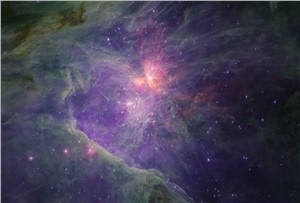



New images of the Orion Nebula from the NASA/ESA/CSA James Webb Space Telescope have been included in ESA’s ESASky application, which has a user-friendly interface to visualise and download astronomical data.
One of the brightest nebulae in the night sky is Messier 42, the Orion Nebula, located south of Orion’s belt. At its core is the young Trapezium Cluster of stars, the most massive of which illuminate the surrounding gas and dust with their intense ultraviolet radiation fields, while protostars continue to form today in the OMC-1 molecular cloud behind.

By Orbit Type (LEO, MEO, GEO, Others), by Architecture (Transparent Payload, Regenerative Payload), by Service Type (Fixed Satellite Service, Mobile Satellite Service, Broadband Satellite Service, Others), by End-User (Telecommunication, Government, Defense, Aviation, Others) and Region, with Forecasts from 2025 to 2034
Download free sample pagesThe nebula is a treasure trove for astronomers studying the formation and early evolution of stars, with a rich diversity of phenomena and objects, including: outflows and planet-forming disks around young stars; embedded protostars; brown dwarfs; free-floating planetary mass objects; and photodissociation regions – the interface regions where the radiation from the massive stars heats, shapes and influences the chemistry of the gas.
The new imaging was obtained with Webb’s near-infrared camera, NIRCam, and has been made into two mosaics, one each from the short and long wavelength channels. These are among the largest Webb mosaics observed to date and given the high resolution and large area, they have been incorporated in ESASky to enable easy exploration of the plethora of interesting astronomical sources contained within them. The short-wavelength mosaic maximises Webb’s angular resolution to reveal beautiful details in discs and outflows, while the long-wavelength one showcases the intricate network of dust and organic compounds called polycyclic aromatic hydrocarbons. We encourage you to explore these images to see what hidden treasures you can find!